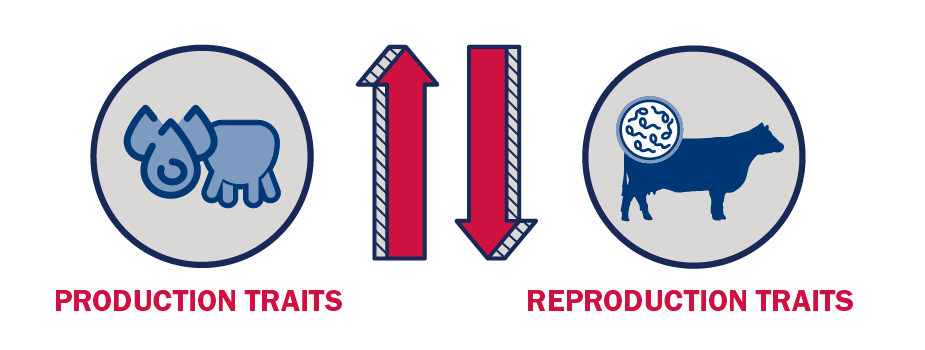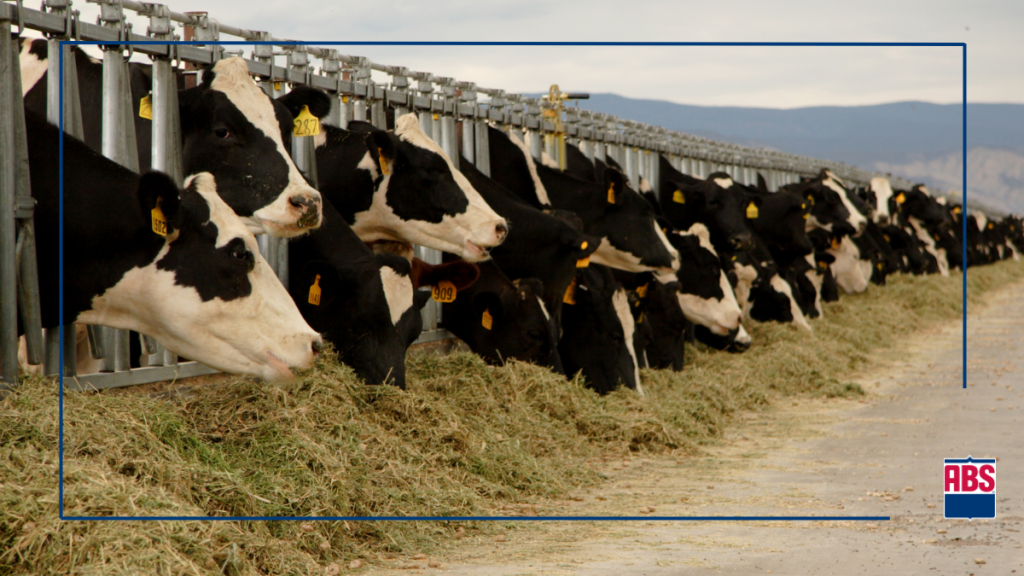Publish date: 9.11.24
It is important to understand each trait on a bull proof or genomic evaluation, its definition, and the potential financial impact it can have on your operation when you select for it. In certain circumstances, one point, plus or minus, could have minor impacts; in others, the impact can be much bigger.
To reiterate from our previous quantifying traits blog, traits are calculated as predicted transmitting abilities (PTAs) compared to the average of the breed population. This is referred to as the base, which undergoes a base change process that recalculates averages every five years. The last base change was in 2020, so the current PTA base is from cows born in 2015. The next base change will occur in 2025. Please be aware of these adjustments as they help maintain the accuracy and relevance of genetic evaluations over time as new data and breeding advancements occur.
Today’s quantifying traits blog discusses reproduction and the traits to consider. You will learn about the financial impact they have on your herd’s reproduction as they change positively or negatively.
Making Sense of the Dollars and Cents: Using Reproductive Traits
Every animal has a job on a dairy and getting pregnant efficiently is the key to a long and profitable career for the operation. Thus, managing reproduction is very important on a dairy. Each open preg check means more time until that animal starts another lactation, more labor to get her pregnant during the next service, and more investment in resources needed to get her pregnant. Overall, if the animal is pregnant that is one less thing you have to worry about. This is why a reproductive trait is often a key component of a well-balanced genetic index.
The two most common reproductive traits to include in a custom index are Cow Conception Rate (CCR) and Daughter Pregnancy Rate (DPR). CCR and DPR are tools you have in your tool belt, and you get to choose which tool is the best indicator for your herd’s reproductive success.
Cow Conception Rate (CCR)

CCR is the percentage of inseminated cows that become pregnant at each service and is shown as the difference from the average conception rate of the base population. For example, a bull with a CCR value of 1 implies that the conception rate for his daughters is estimated to be 1% higher during the lactation than for daughters of a bull with an evaluation of 0.
If you breed 100 cows, one point on conception rate means one more confirmed pregnancy which represents an animal who has crossed a key milestone to punch her ticket to the next lactation. There is a chance that the animal could get pregnant in later services, but every open pregnancy diagnosis means more days open, labor, and a compounding trajectory towards the danger zone of not returning for another lactation. To demonstrate just have valuable a pregnancy is financially, the Dairy Cattle Reproduction Council published the value of pregnancy ranges between $200-600.
Daughter Pregnancy Rate (DPR)

DPR is defined as the percentage of cows that become pregnant every 21 days compared to the average pregnancy rate of the base population. The trait’s equation assumes a 50-day voluntary waiting period.
A DPR of 1 on a bull’s proof tells us that daughters from him will average 4 fewer days open in their lactation. One day open can cost anywhere from $2 to $6, so a point of DPR is valued between $8- $24 per daughter per lactation in cost savings.
The Best Custom Index is Balanced
Selecting based on individual traits can give anyone a headache considering all the different traits, their meanings, and differences in what a higher or positive number means. Thus, that’s why we suggest creating a balanced Custom Index to simplify your genetic selection into one number that is customized for your specific dairy.
A Custom Index must balance all three areas: production traits, health and fitness traits like the reproduction ones discussed in this blog, and conformation traits. The best part about a Custom Index is you have the power to choose which traits are of most importance to your dairy and weigh them accordingly. Creating a balanced Custom Index is vital because production and reproduction traits are negatively correlated. This means if you put all your eggs in one basket, you will be going backward in the other traits.

But don’t be afraid. The process of creating your Custom Index does not have to be difficult. As your genetic advisor, ABS is here to assist you in creating a Custom Index that works by developing a breeding plan that is customized to your specific dairy.
Are you interested in maximizing your genetic improvement or creating your own Custom Index? Fill out the form below or get in touch with your ABS Genetic Advisor.






